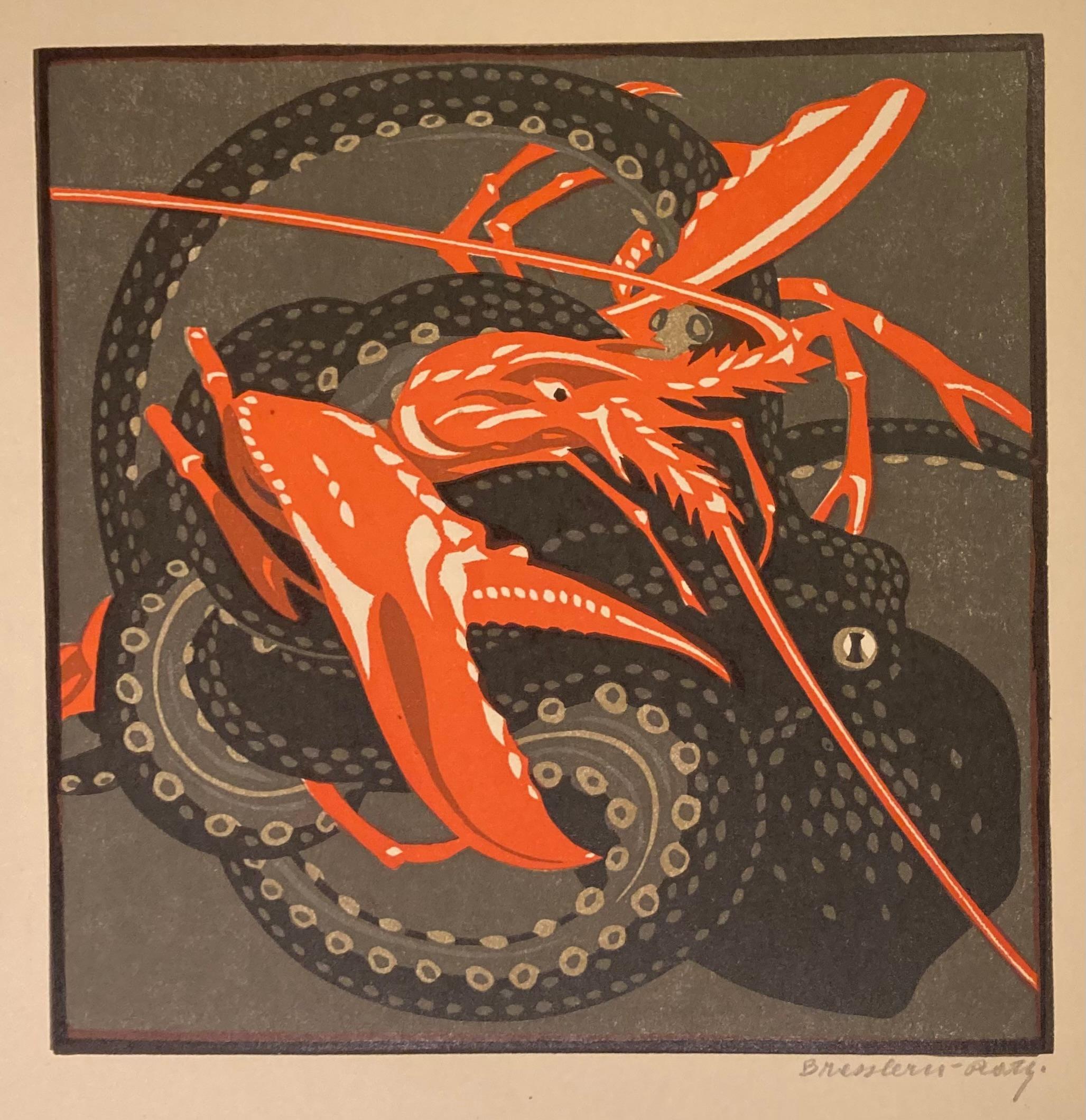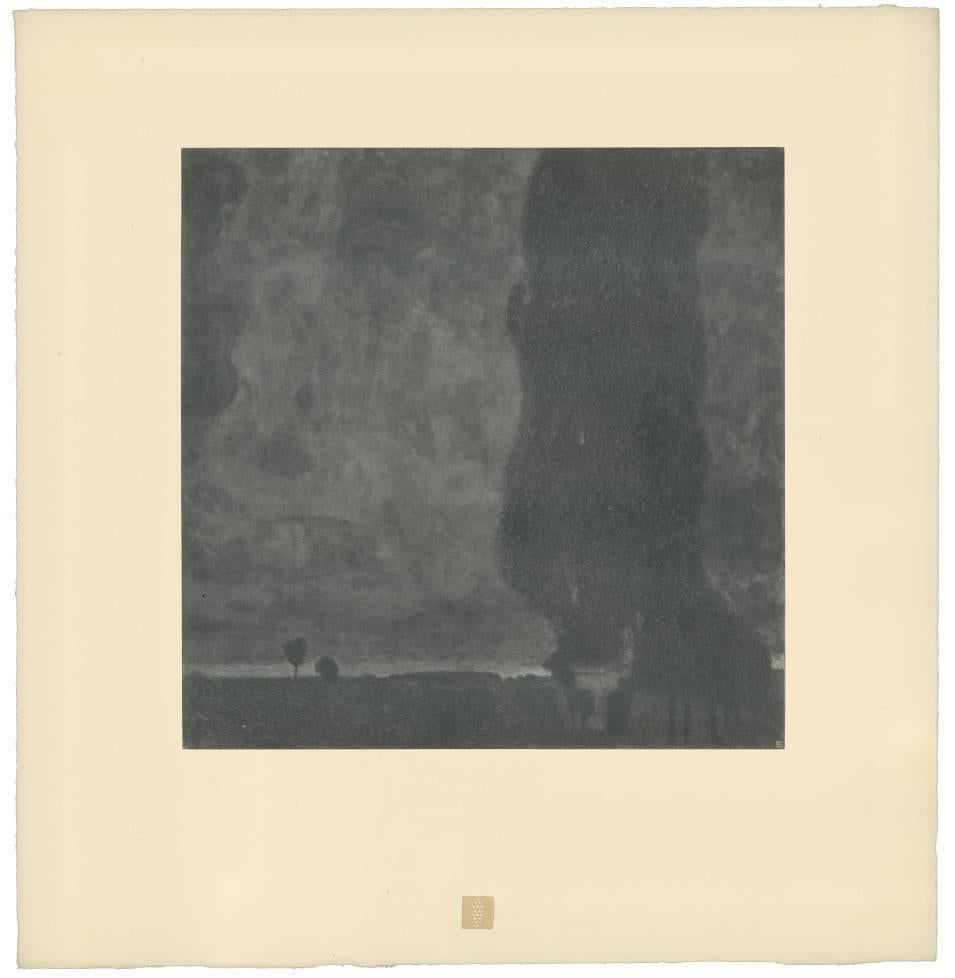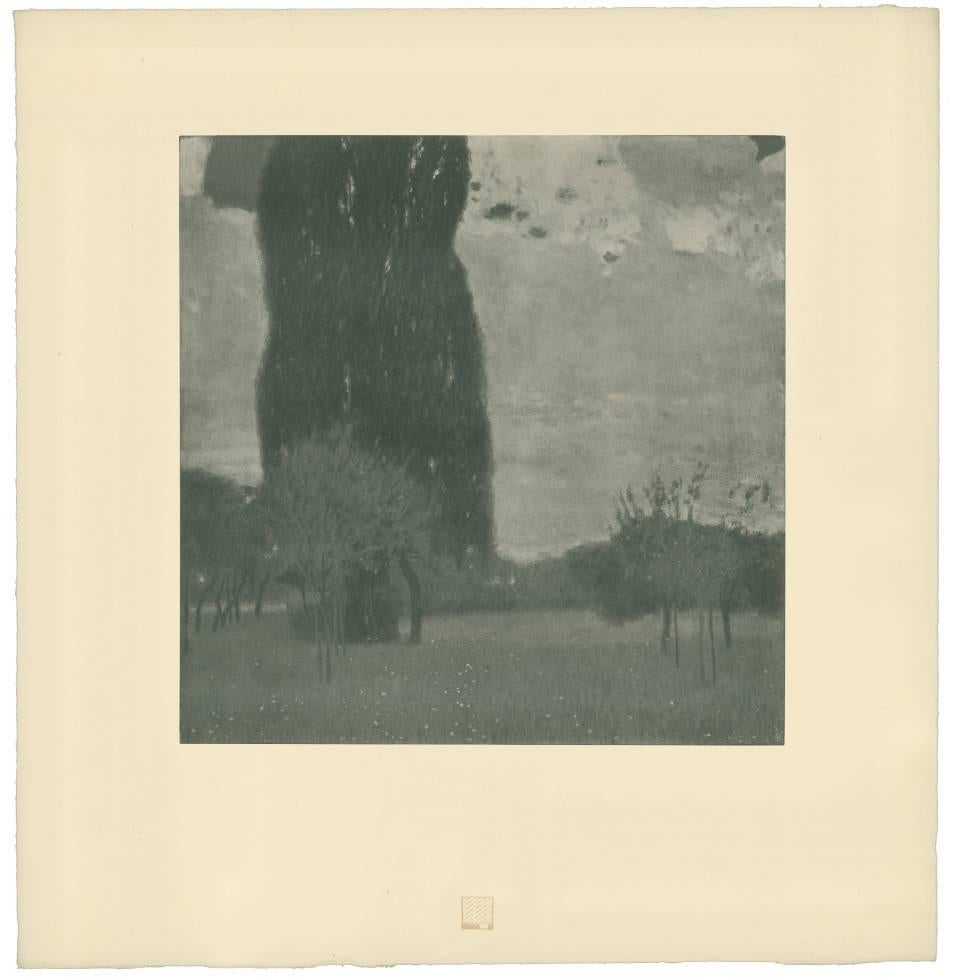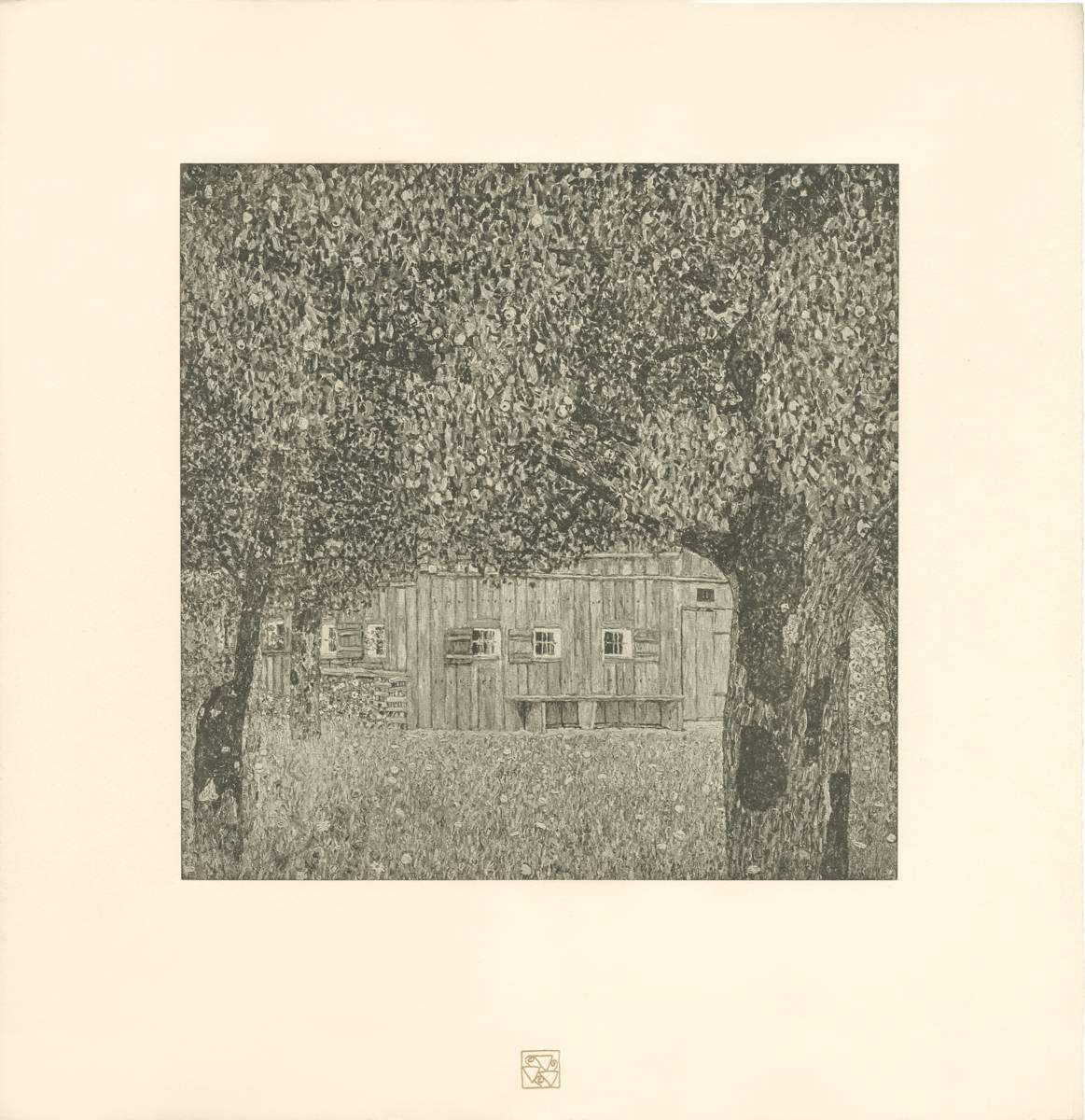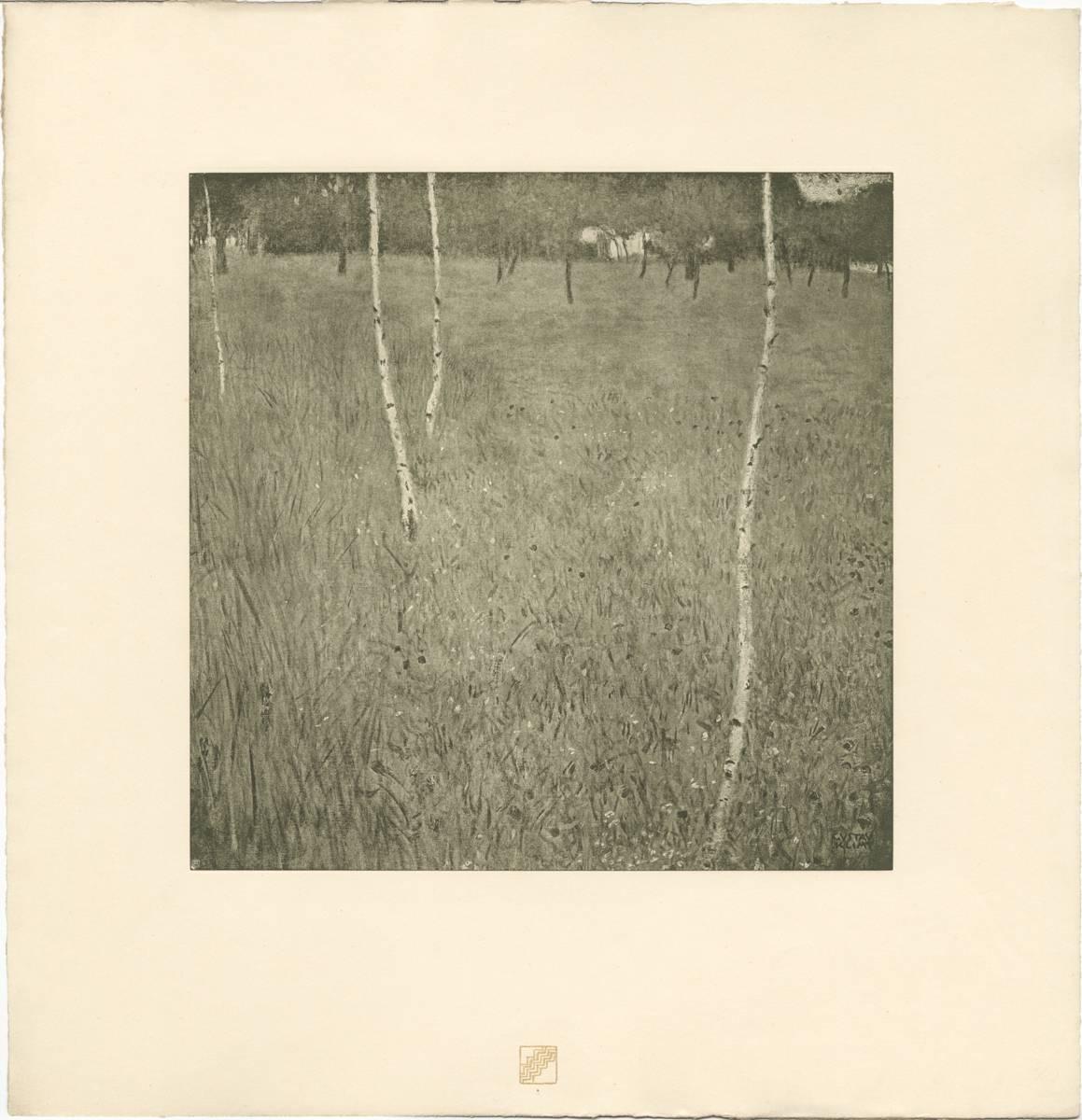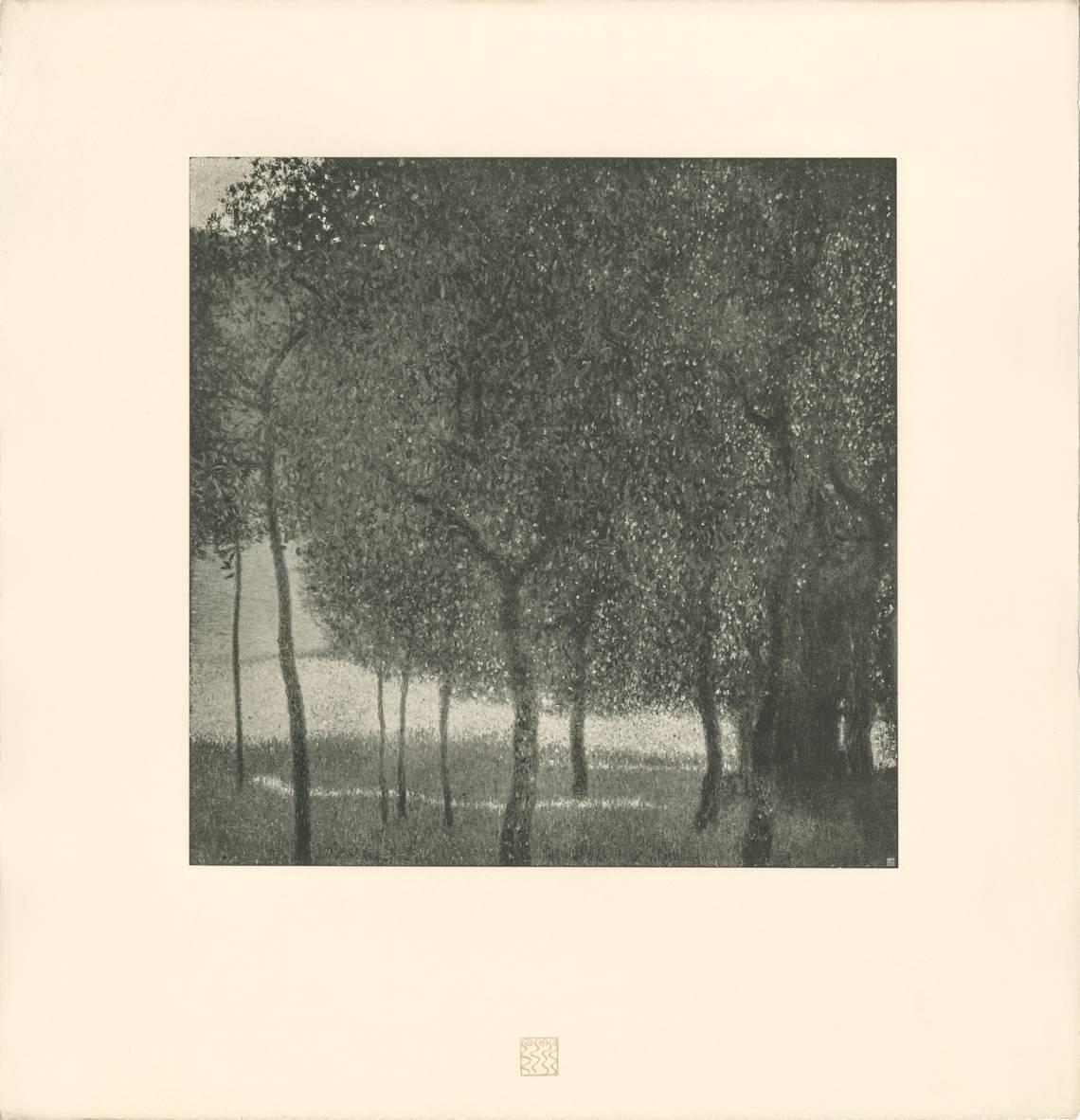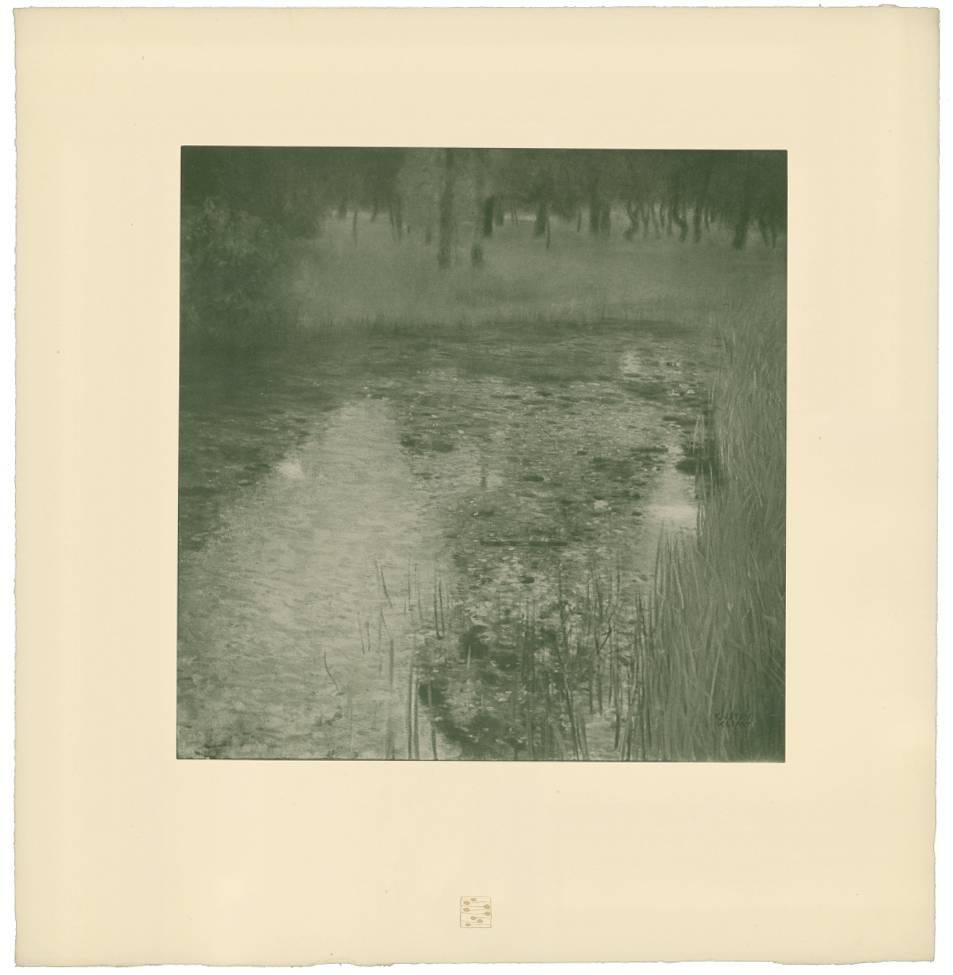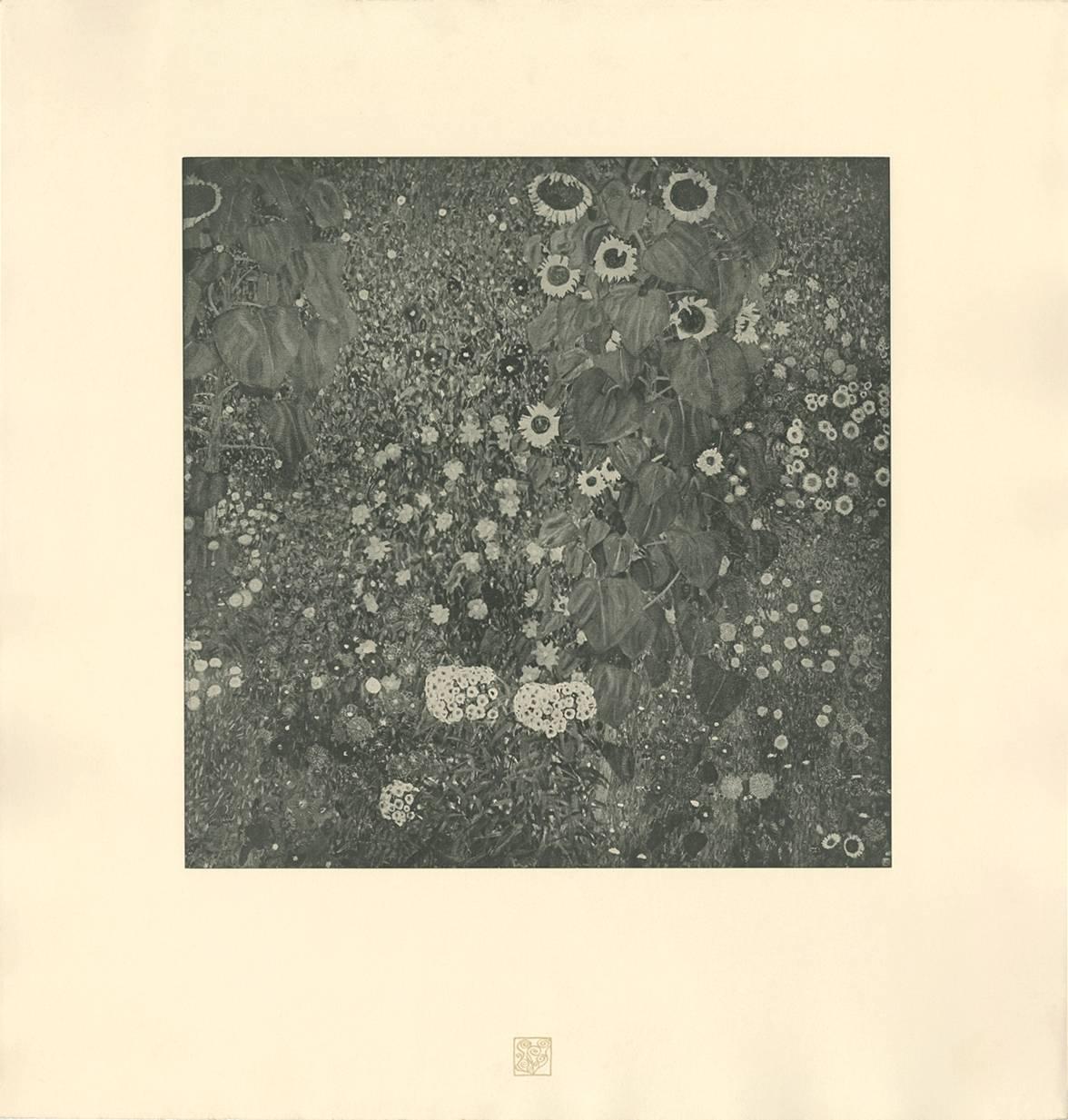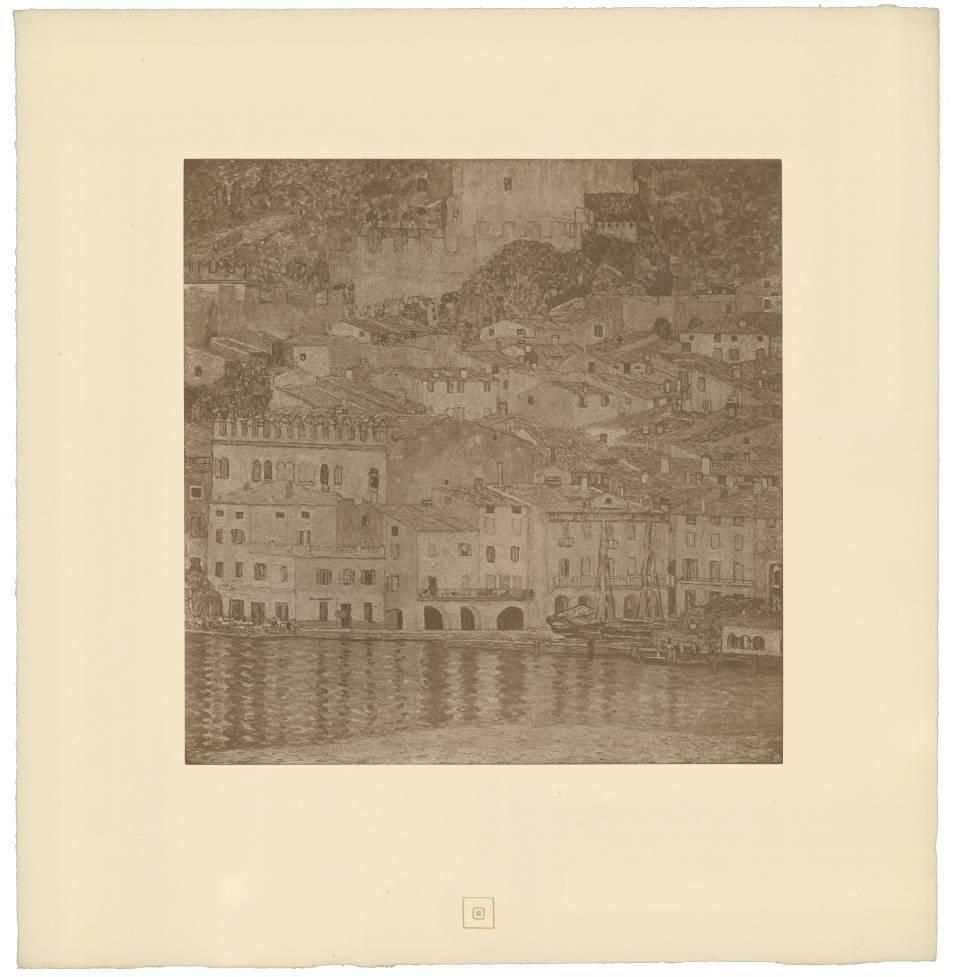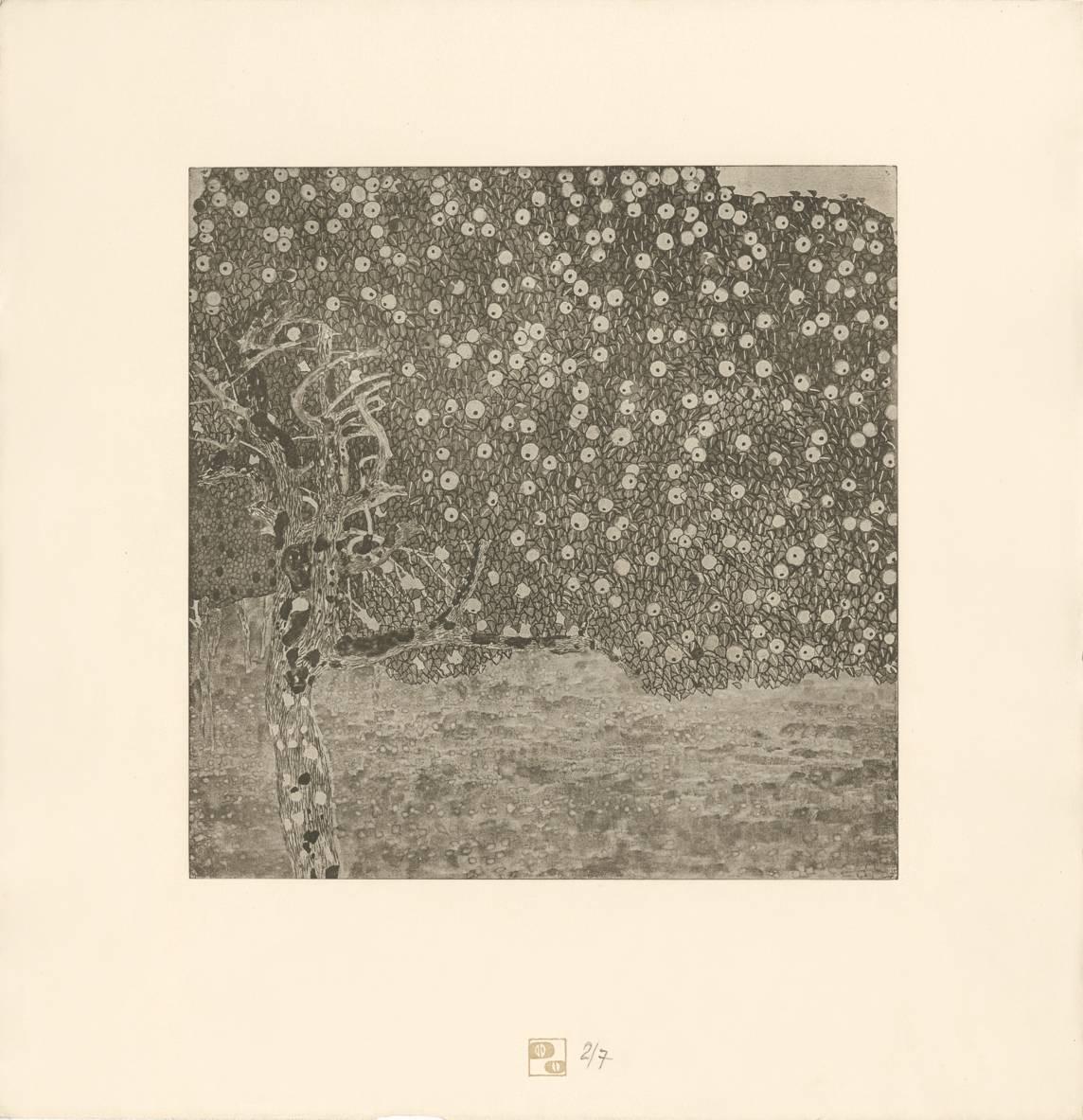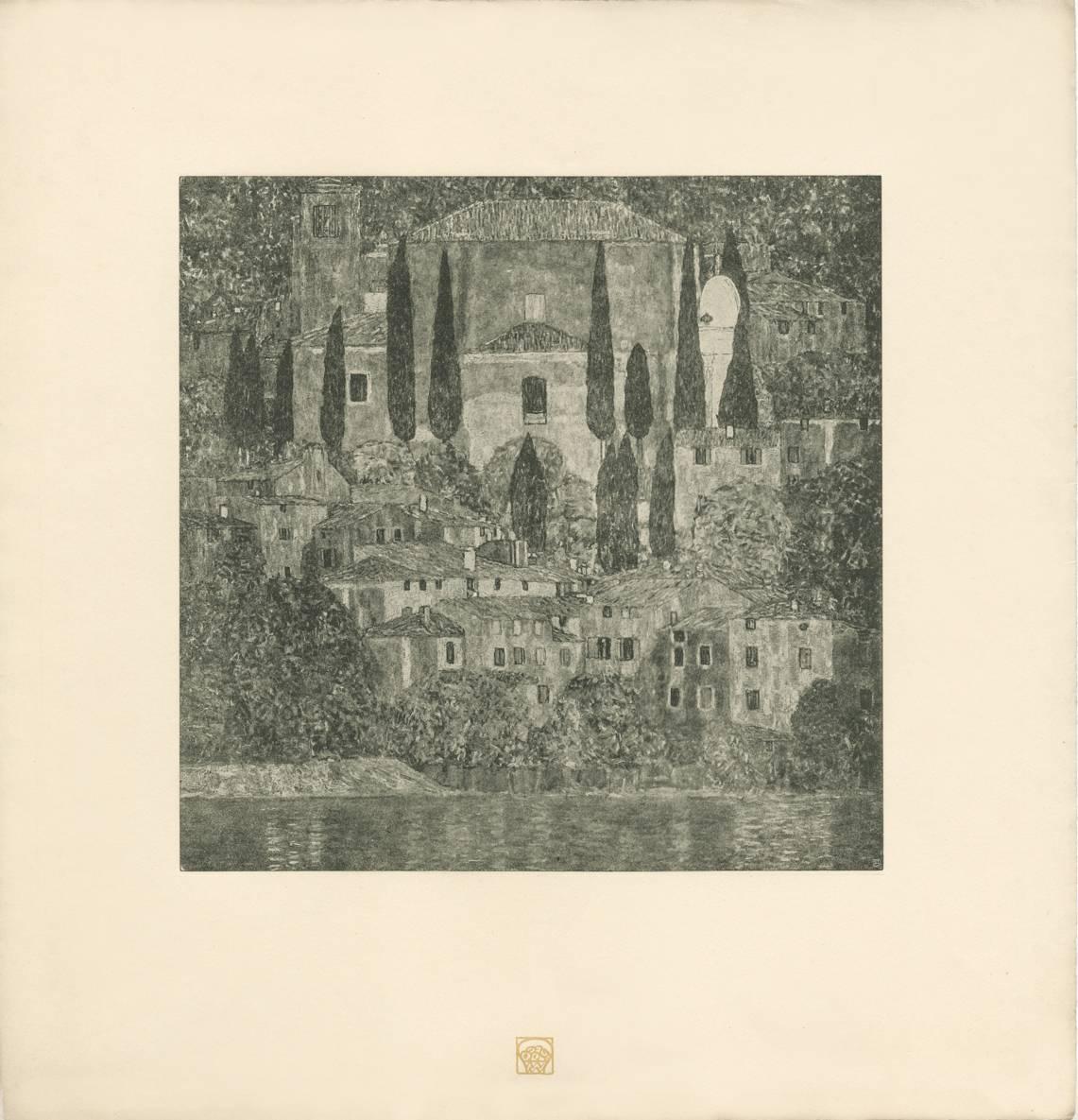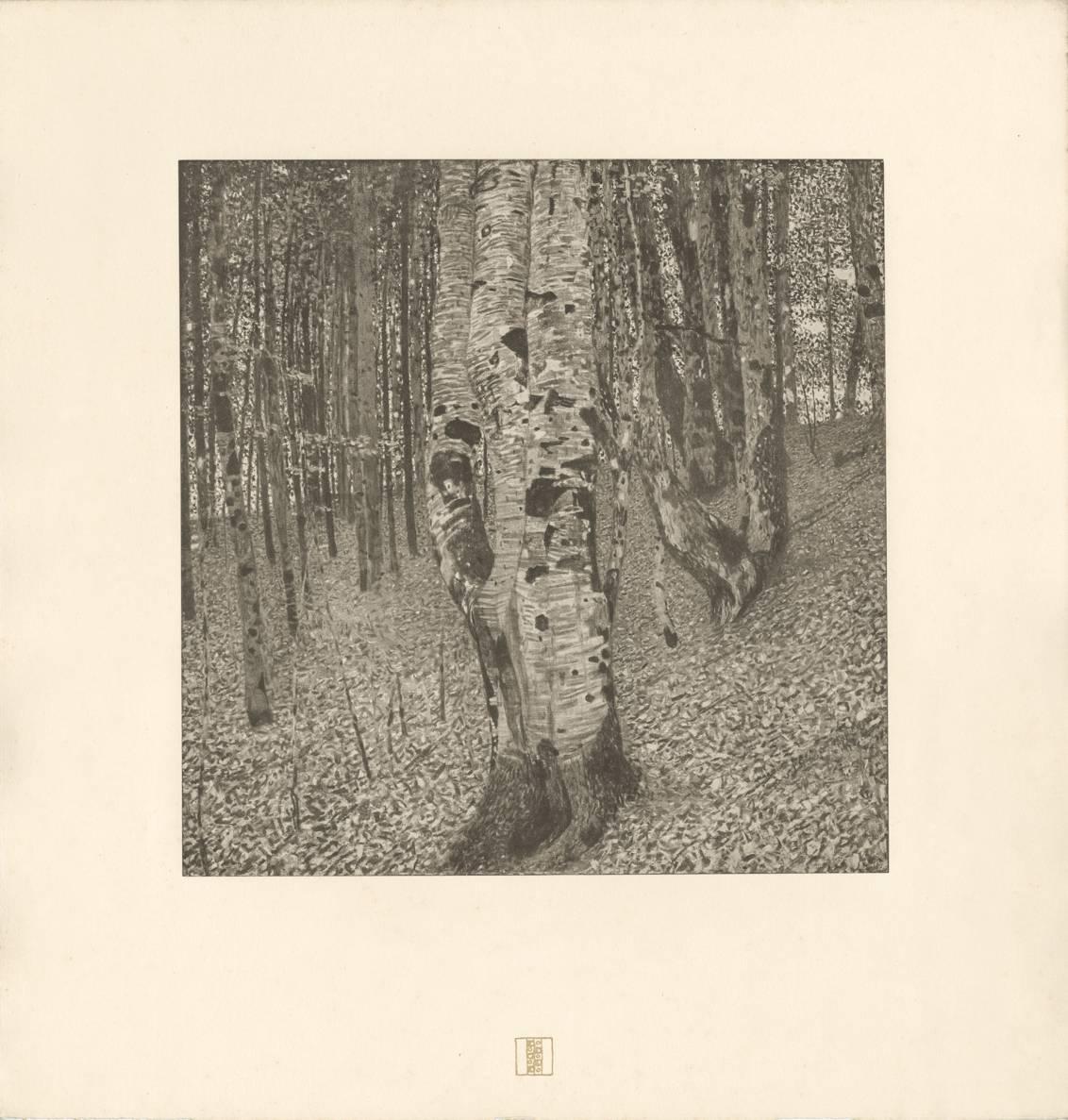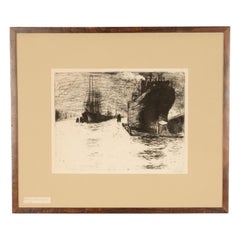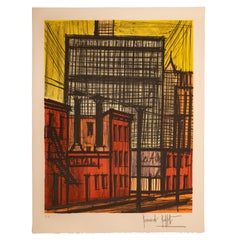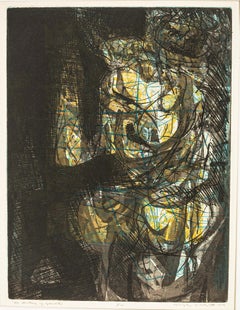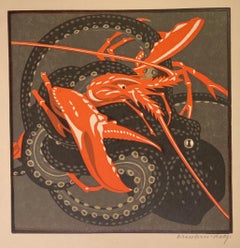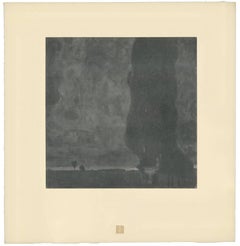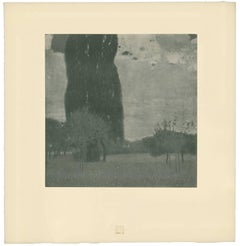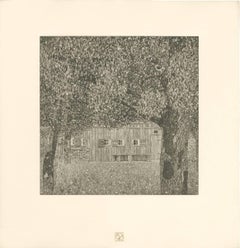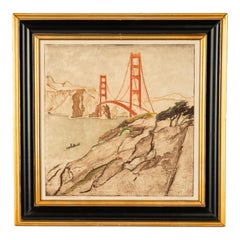
Max Pollak San Francisco Colored Etching Aquatint Golden Gate Bridge Signed 1944
View Similar Items
Want more images or videos?
Request additional images or videos from the seller
1 of 17
Max PollakMax Pollak San Francisco Colored Etching Aquatint Golden Gate Bridge Signed 1944
$2,200List Price
About the Item
- Creator:Max Pollak (1886 - 1970, Austrian)
- Dimensions:Height: 20.75 in (52.71 cm)Width: 20.75 in (52.71 cm)Depth: 0.75 in (1.91 cm)
- Medium:
- Movement & Style:
- Period:
- Condition:Good condition.
- Gallery Location:Portland, OR
- Reference Number:Seller: BB-101811stDibs: LU1366214662602
Max Pollak
Max Pollak, painter and printmaker, was born in Prague, Czechoslovakia on February 2, 1886, but his family moved to Vienna, Austria when he was six months old. He was raised in Vienna and, in 1902, at sixteen years of age he entered the Vienna Academy of Art. He studied painting and printmaking under William Unger and Ferdinand Schmutzer. In 1912, he traveled to Italy, France, and Holland to study and paint. During the First World War, he was appointed painter of the Austrian Army. He immigrated to the U.S. in 1927, living for a time on the East Coast where he traveled about and produced an amazing series of color aquatints of New York, Cincinnati, and Detroit. His first exhibition at the 57th Street Art Gallery in New York was a commercial success and he was commissioned by Theodore Dreiser in 1929 to illustrate his book, My City, and eight of Pollak's color aquatints are reproduced in the book. In 1938, Pollak and his wife, Friedl, moved to San Francisco, California. Pollak was inspired by his new city and its environs and produced beautiful views of San Francisco, the Golden Gate Bridge, and Sausalito. Later travels were to Mexico and Guatemala. Pollak was equally facile working in drypoint, aquatint, and soft ground etching. One of his specialties was portraiture and he produced a number of drypoints of noteworthy people and dancers. Some of his color aquatints of San Francisco and Sausalito were derived from views from his homes in those cities. His graphic oeuvre is comprised of over 500 prints for which he won numerous awards including the Chicago Society of Etchers prize in 1942, and the California Society of Etchers awards in 1942, 1944, and 1945. Pollak exhibited at the Golden Gate International Exposition in 1939 and had numerous solo exhibitions, including a 1928 show in New York, a 1940 show at the California Palace of the Legion of Honor, and a 1973 exhibition at the Triton Museum in Santa Clara. He was a member of the Chicago Society of Etchers and the California Society of Etchers and his work is represented in the Oakland Museum of California Art, the Metropolitan Museum of Art, the New York Public Library, the Smithsonian American Art Museum, the de Young Memorial Museum, the Achenbach Foundation for Graphic Arts, and the British Museum, the Judah L. Magnes Museum, and Princeton University. Max Pollak died in Sausalito, California on May 29, 1970.
About the Seller
5.0
Platinum Seller
Premium sellers with a 4.7+ rating and 24-hour response times
Established in 1990
1stDibs seller since 2020
59 sales on 1stDibs
Typical response time: 1 hour
Authenticity Guarantee
In the unlikely event there’s an issue with an item’s authenticity, contact us within 1 year for a full refund. DetailsMoney-Back Guarantee
If your item is not as described, is damaged in transit, or does not arrive, contact us within 7 days for a full refund. Details24-Hour Cancellation
You have a 24-hour grace period in which to reconsider your purchase, with no questions asked.Vetted Professional Sellers
Our world-class sellers must adhere to strict standards for service and quality, maintaining the integrity of our listings.Price-Match Guarantee
If you find that a seller listed the same item for a lower price elsewhere, we’ll match it.Trusted Global Delivery
Our best-in-class carrier network provides specialized shipping options worldwide, including custom delivery.More From This Seller
View AllImportant German Expressionist Etching Hamburg, Reiherstiegdock 1910 Emil Nolde
By Emil Nolde
Located in Portland, OR
Highly important German Expressionist etching by Emil Nolde (1867-1956), Hamburg, Reiherstiegdock, 1910.
This is a very rare signed and titled etching of Hamburg, Reiherstiegdock, is...
Category
Early 1900s Expressionist Landscape Prints
Materials
Etching
Original French Modernist E.A. Proof Lithograph Signed Bernard Buffet New York
By Bernard Buffet
Located in Portland, OR
Very rare original Signed E.A. Artist's Proof, color lithograph, "New York", by Bernard Buffet (1928-1999). Circa 1980.
A Landscape image by the celebrated French Modernist figurative artist Bernard Buffet, titled "New York". The color litho shows buildings and skyline in New York City, this is a rare image from a series of New York views produced by Buffet.
The artwork is signed in pencil lower left "E.A", Artist's Proof in French, from the limited edition numbered prints (which was limited to 150) , it is also boldly signed "Bernard Buffet" lower right.
Condition is excellent, we at Bloomsbury Fine...
Category
1980s Modern Landscape Prints
Materials
Lithograph
French Surrealist Color Etching "La Sibylle et les Astres" Signed & Numbered
By André Masson
Located in Portland, OR
A very attractive French surrealist color etching by Andre Masson (1896-1987), signed & numbered.
The etching is titled in French "La Sibylle et les Astres", translated as "The Sybil...
Category
1970s Surrealist Figurative Prints
Materials
Color Pencil, Aquatint
African American Abstract Expressionist Etching Aquatint "Anatomy of Aphrodite"
By Warrington Colescott
Located in Portland, OR
An important abstract expressionist color aquatint etching by the celebrated African American artist (1921-2018), titled "An Anatomy of Aphrodite", signed & dated 1959.
Colescott was...
Category
1950s Abstract Expressionist Abstract Prints
Materials
Etching, Aquatint
Antique American Expressionist Oil & Gouache Painting of Ibiza Martin Baer 1935
By Martin Baer
Located in Portland, OR
Antique Expressionist Painting of Ibiza by the American Artist Martin Baer (1894-1961), 1935. Baer was born in Chicago and early in his career worked in Germany, North Africa, and Pa...
Category
1930s Expressionist Landscape Paintings
Materials
Oil, Watercolor, Gouache
Mid Century French Expressionist Oil on Canvas Paris Street Scene Signed Titled
Located in Portland, OR
A good French Mid Century Expressionist oil on canvas painting by the celebrated French female artist, Renée Bernard (1906-2004), a street scene in Paris, circa 1960.
A very good mid...
Category
1960s Expressionist Landscape Paintings
Materials
Oil, Canvas
You May Also Like
LOBSTER and OCTOPUS (KAMPF - BATTLE)
By Norbertine Bresslern-Roth
Located in Santa Monica, CA
NORBERTINE VON BRESSLERN-ROTH (1891 1978)
KAMPF (BATTLE - LOBSTER and OCTOPUS) c. 1928
Color linoleum cut Signed in pencil. Image 8 5/8 x 8 11/16”
In excellent condition and full ...
Category
1920s Vienna Secession Animal Prints
Materials
Linocut
H.O. Miethke Das Werk folio "The Great Poplar II (Thunderstorm)" collotype print
By Gustav Klimt & K.K. Hof-und Staatsdruckerei
Located in Chicago, IL
DAS WERK GUSTAV KLIMTS, a portfolio of 50 prints, ten of which are multicolor collotypes on chine colle paper laid down on hand-made heavy cream wove paper with deckled edges; under ...
Category
Early 1900s Vienna Secession Landscape Prints
Materials
Paper
H.O. Miethke Das Werk folio "The Great Poplar I" collotype print
By Gustav Klimt & K.K. Hof-und Staatsdruckerei
Located in Chicago, IL
DAS WERK GUSTAV KLIMTS, a portfolio of 50 prints, ten of which are multicolor collotypes on chine colle paper laid down on hand-made heavy cream wove paper with deckled edges; under ...
Category
Early 1900s Vienna Secession Landscape Prints
Materials
Paper
H.O. Miethke Das Werk folio "Farm House in Buchberg" collotype print
By Gustav Klimt & K.K. Hof-und Staatsdruckerei
Located in Chicago, IL
DAS WERK GUSTAV KLIMTS, a portfolio of 50 prints, ten of which are multicolor collotypes on chine colle paper laid down on hand-made heavy cream wove paper with deckled edges; under each of the 50 prints is a gold signet intaglio printed on the cream paper each of which Klimt designed for the publication as unique and relating to its corresponding image; H.O. Miethke, Editor-Publisher; k.k. Hof-und Staatsdruckerei, Printer; printed in a limited edition of 300 numbered plus several presentation copies; Vienna, 1908-1914.
The idea of collaboration in the arts is anything but new; however it has so often been viewed and assessed as somehow devaluing the intrinsic worth of art. It’s as if it was a dirty secret to be hidden away. More so even than the eroticism explored by Klimt, which divided public opinion, the artistic avant-garde began to boldly flaunt artistic collaboration beginning in the 19th century- which gained steam in the first part of the 20th century- to become a driving vehicle of contemporary artistic creation. Viewed in this context, the folios of collotype prints published by H.O. Miethke in Vienna between 1908-1914 known as Das Werk Gustav Klimts, are important art documents worthy of as much consideration for their bold stand they take on established ways of thinking about artistic collaboration as they are for their breathtakingly striking images.
1908 is indeed a watershed moment in the history of art. To coincide with the 60th anniversary of the reign of Emperor Franz Joseph I, Kunstschau opened in Vienna in May of that year. It was there that Klimt delivered the inaugural speech. Speaking about the avant-garde group’s unifying philosophy of Gesamtkunstwerk, or the synthesis of the arts, Klimt shared his belief that the ideal means to bring artists and an audience together was via “work on major art projects.” It was at Kunstschau 1908 that Klimt first exhibited his most iconic painting, The Kiss, as well as The Sunflower, Water Snakes I and II and Danae. It was at Kunstschau 1908 that Das Werk Gustav Klimts was first available for purchase. Thanks to Galerie Miethke’s organization, Kunstschau 1908 was possible. Miethke’s pioneering art...
Category
Early 1900s Vienna Secession Landscape Prints
Materials
Paper
H.O. Miethke Das Werk folio "Farmhouse With Birch Trees" collotype print
By Gustav Klimt & K.K. Hof-und Staatsdruckerei
Located in Chicago, IL
DAS WERK GUSTAV KLIMTS, a portfolio of 50 prints, ten of which are multicolor collotypes on chine colle paper laid down on hand-made heavy cream wove paper with deckled edges; under ...
Category
Early 1900s Vienna Secession Landscape Prints
Materials
Paper
H.O. Miethke Das Werk folio "Fruit Trees" collotype print
By Gustav Klimt & K.K. Hof-und Staatsdruckerei
Located in Chicago, IL
DAS WERK GUSTAV KLIMTS, a portfolio of 50 prints, ten of which are multicolor collotypes on chine colle paper laid down on hand-made heavy cream wove paper with deckled edges; under ...
Category
Early 1900s Vienna Secession Landscape Prints
Materials
Paper
Recently Viewed
View AllMore Ways To Browse
Tony Bennett Lithographs
Bernard Cathelin On Sale
Eyvind Earle Serigraph
Frank Licsko On Sale
Gonville Caius
Guy Maccoy
Jules Cavailles On Sale
Lucien Jonas
M B Bryant Co
Michael Schofield On Sale
Rowland Langmaid
Sir Muirhead Bone On Sale
Welliver Screen Print
Adolphe Beaufrere
Altman Luxembourg Lithograph
Ana Popescu
Christo Wrapped Statues
Dali Espana
